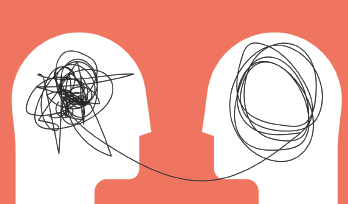Empathy & Interpersonal Healing

Paul Craft / shutterstock.com
In rheumatology, the placebo effect is also understudied and, in general, is viewed as an obstacle to overcome in therapeutic trials. A recent analysis of the placebo effect in RA treatment studies over time documents that its magnitude has increased in recent years, possibly due to increased expectations on the part of our patients.16
There have been major advances in the science of the placebo effect, largely dispatching the notion of the requirement of trickery and replacing it with the recognition that outcomes (i.e., placebo and nocebo effects) are powerfully influenced by therapeutic environments, including such characteristics as provider empathy, friendliness and competence.17,18
Motivational interviewing (i.e., a psychological intervention incorporated in holistic care) includes a dimension of empathic communication and has been shown to be associated with beneficial therapeutic effects in rheumatic diseases, but no studies of the direct role of provider empathy or patient-perceived provider empathy exist in rheumatologic diseases.19 Strategies to enhance empathy can positively enhance a patient’s experience and active neurobiological adaptations potentially leading to improved treatment responses, such as pain relief and improvements in quality of life.17
Obstacles to Empathy
Roadblocks to cultivating our level of empathy include our experiences at work and in our personal lives. The same challenges that are so widely discussed as risks for burnout—including our engagement in tasks peripheral to caring for patients, the challenges of the electronic medical record, the never-ending focus on productivity and declining reimbursement—all leave us too stretched to be truly empathic.9
Time limitations are among the most significant challenges, although empathic communication skills can be demonstrated and effectively communicated in only a brief moment. Studies examining the concept of time in the exam room and patient expectations confirm that when patients feel listened to, understood and cared about, the visits go faster and more smoothly and patients who are the recipients of an empathic visit tend to overestimate the time spent with the provider.20
Can Empathy Be Taught or Can We Only Lose It?
The trajectory of empathy over a life in medicine has been incompletely studied, but there is evidence that as early as the third year in medical school empathy begins to be eroded in most, but not all, students.21 Thus, can empathy be taught?
While there is clear evidence that one can teach and learn etiquette and improve the overall patient experience, we should ask ourselves whether this is enough.9 More importantly, I believe we should focus on the question of whether we can actually increase our capacity to care about our patients in the style of Francis Peabody.10
Here it becomes more challenging, but there is a growing body of data suggesting that empathy can be taught. One such study, utilizing a curriculum based in neuroscience, demonstrated enhancement of empathy in a clinical training program.22 Another study showed that non-verbal communication increased patients’ perceptions of provider empathy, with no loss in their perception of medical competence.23
In a large healthcare system, an advanced communication course based on establishing and cultivating a relationship-centered care model with patients was also found to result in significant increases in empathy measured by the JES and was accompanied by increased professional satisfaction. 24
Other techniques, especially the use of positive role modeling, engaging in narrative medicine and even reading fiction have also been demonstrated to be effective modulators of provider empathy.25
Essential to the genuine growth and development of personal empathy, however, is the notion of self-care. It is clear that although good bedside manners can be easily taught, the growth and development of personal empathy can only come when we are in balance with our work and our life.
The same obstacles to overcome and buffer burnout, such as system-level solutions to improve our daily work-life balance, are exactly what we need to enhance our sense of empathy directed toward our patients, as well as our family and those we come into contact with in our day-to-day life.
Personal wellness techniques, such as mindfulness, meditation, exercise and hobbies, also have the potential to grow our sense of caring and compassion in a way that is inexhaustible.26
Given these challenges and data it would appear to be time to explore strategies to enhance teaching empathy and empathic communication in rheumatology training programs and beyond.
I will close by recommending a book, The Empathy Effect, by Helen Reiss, an associate clinical professor of psychiatry at Harvard Medical School, Boston, and director of empathy research and training in psychotherapy research and a pioneer in empathy research. In it, Dr. Reiss emphasizes the dominance of non-verbal over verbal communication in the practice of empathy. She elegantly underscores the importance of our paying attention to the patient’s eyes, their facial muscles (all clearly compromised in the COVID era!), the tone of their voice and their mood and most importantly, in my opinion, our appraisal of the patient’s affect and their chief concern.
I have used elements from this book to teach a seminar in empathy in the Cleveland Clinic Lerner College of Medicine to the third-year students, as well as to our rheumatology fellows. I like to tell our trainees to reflect on whether or not they have a crisp review of systems for the chief concern, as opposed to the one they use to evaluate the patient’s chief complaint, which they generally do so well.
The future of the science of empathy in rheumatology is unwritten, and there are exciting opportunities to develop meaningful research and educational initiatives.


